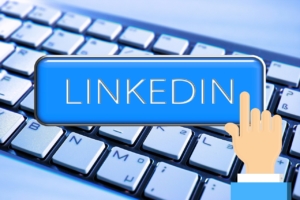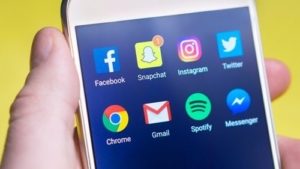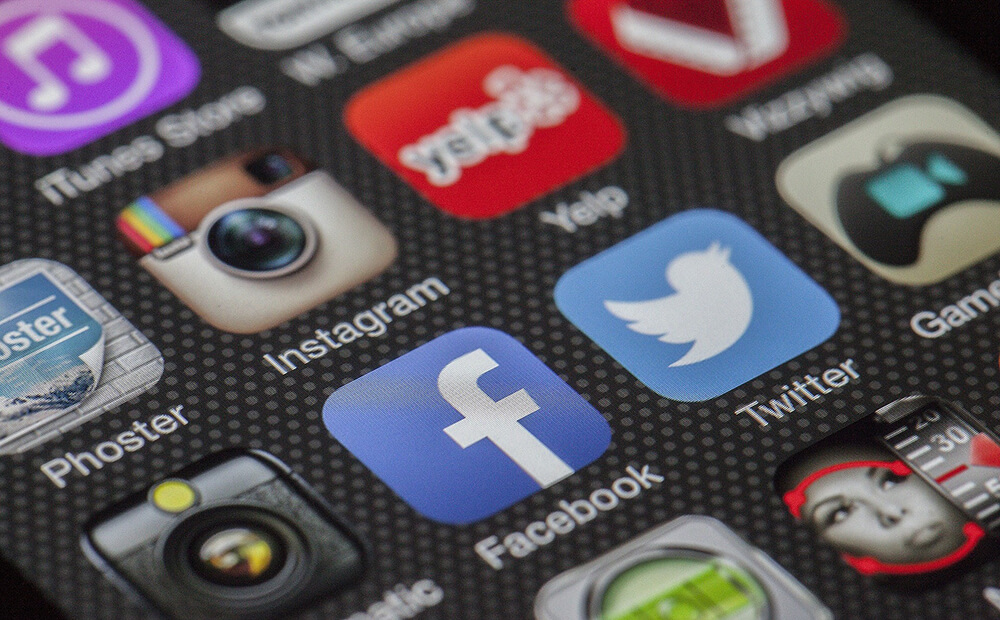This post takes a hard and honest look at whats happening right now. You either “get it” or you are a victim of whats going on. Victims who read this will trash it and deny the reality of what they read. Denial is warm and comfortable. The truth is cold and can hurt. And nobody likes to admit they are wrong, ever. So I expect plenty of haters.
“People are much like cattle or sheep; they just want to be led.”
The author of that controversial and maybe offensive quote is the author of this article. Maybe YOU aren’t like cattle or sheep, but most are. The problem with this sentiment is that some cowpokes and herders may use evil methods to lead their herd for their personal gain. In the digital age, this is done most effectively via disinformation weaponized with social media.
 Here’s How It’s Done:
Here’s How It’s Done:
Cambridge Analytica, on behalf of its clients, scientifically weaponized social media using disinformation to win elections. It was first tested in third world countries and then with Brexit and most recently to win the United States presidential election. Here’s a breakdown of what is believed to be the basis of how it used social influence to change hearts and minds.
Company leaders understood that the weaponization of social media is “the act of manipulating facts by spreading disinformation for propaganda”. This act is accomplished by;
- a coordinated effort using viral memes,
- emotionally charged videos,
- and clickbait headlines.
Confidence Trick
Fundamentally, disinformation is a confidence trick or scam. The motivation of a conman is to influence their mark enough to gain the confidence of the victim. The conman wants to be trusted. Once the conman has the trust of their target, it’s like taking candy from a baby.
Divide and Conquer via Disinformation
The desired outcome of disinformation by its author is to divide and conquer or rule the persons who are manipulated by it. The Oxford definition of “divide and conquer” is the policy of “maintaining control over one’s subordinates or subjects by encouraging dissent between them”. In other words, from the perspective and motivation of the conman, “don’t trust them, trust me.”
I REPEAT:
The desired outcome of disinformation by its author is to divide and conquer or rule the persons who are manipulated by it. The Oxford definition of “divide and conquer” is the policy of “maintaining control over one’s subordinates or subjects by encouraging dissent between them”. In other words, from the perspective and motivation of the conman, “don’t trust them, trust me.”
Can you see exactly how Divide and Conquer and don’t trust them, trust me is being played out every single day in our current political climate with the impeachment hearings? The administrations own cabinet, the people and professionals hired to do the job they are doing, are being deposed and are publicly confirming what was said in the call. The administration is saying don’t trust them, trust me. Thats pure Disinformation.
Disinformation i.e. Dezinformatsiya
Disinformation, fundamentally, is lying. Disinformation used to be spread by the spoken word only. But with the invention of the printed word and the press, disinformation was spread using pamphlets, leaflets, books, magazines, political cartoons, and in planted clandestine newspaper articles. Agents of influence, political spies, and journalists can all be used to spread disinformation. Digitally, social media spreads disinformation like the proverbial wildfire.
The birth of the word “disinformation” comes from the Russian word (dez-inform-ahhT-see-ahh) dezinformatsiya. Joseph Stalin coined the term in 1923 derived from the title of the KGB black propaganda “special disinformation office” department. Disinformation was formally defined in the Great Soviet Encyclopedia in 1952 as “false information with the intention to deceive public opinion”.
Disinformation is meant to instill fear and confuse its intended target by blurring the lines between fact and fiction. Disinformation’s primary purpose is to spread conspiracy theories that isolate readers and viewers from alternative viewpoints to create a cloud of confusion and paranoia.
Disinformation in Mainstream Media
Can you see where in our culture, right now, which leg or legs of our media might isolate readers and viewers from alternative viewpoints to create a cloud of confusion and paranoia? If you can’t, then you are a victim of Disinformation. You are being led. You are sheep.
When you see disinformation, which is born a lie that you believe to be the truth, and you agree with it and then support it by liking it and sharing it, you are then a victim of it and a perpetrator of the confidence crime that the disinformation is.
The 5 P’s of Persuasion
Heres how minds are manipulated;
Persuasion
When you are of a particular belief…or persuasion…it means that you have already made up your mind. An example of this is of the Republican persuasion or the Democratic persuasion. Another definition of persuasion is the act of influencing another person to change their mind or to do something they might not do without your influence.
Psychographics
This is the study of people based on their aspirations, attitudes, and other criteria. It is especially the case in market research. The study of psychographics is a methodology that is used to describe a person based on their psychological attributes. The method has been applied to studying values, attitudes, personality, opinions, lifestyles, and interests.
Psychological Operations (PSYOPS)
Psychological operations, or PSYOPS, are used to convey certain pieces of indicators and information to an audience to influence their motives, objective reasoning, and emotions. It can ultimately affect the behavior of organizations, governments, individuals, and groups.
Psychological Warfare
The act of psychological warfare is the planned use of threats, propaganda, or other non-combat techniques during the danger of war or even during a war. It can also apply to any time of political unrest to demoralize, intimidate, or influence the behavior or thinking of the enemy.
Propaganda
Propaganda is defined as information that has no objectivity and is used to influence a specific audience or to further an agenda. This is often done by presenting selective facts to encourage a particular perception or synthesis, or by using loaded language to create an emotional instead of a rational response to the given information.
Propaganda Comes in Many Flavors.
White propaganda is information that is purposefully put out by a known transparent source and credited by its origin. The information intends to express a valid option of its author. An example would be a political ad put out by the “Jane Smith” political campaign designed to discredit her opponent and at the conclusion the video stating “Brought to you by the campaign to elect Jane Smith.”
Grey Propaganda is when the source of information is not expressed nor credited, and the identity of the source is concealed. The information shown does not have to be inaccurate as it could be true or false. An example might be a local small business putting out an ad about a competitor revealing the competitor uses inferior materials. This information may be correct, but the author, to avoid backlash, doesn’t want to admit they placed the ad.
Black propaganda is false information that is designed to look like it was created by those it is intended to discredit. For example, a meme or video that might appear to come from the Black Lives Matter network that may express images or video sanctioning black people attacking white people. Obviously, it is not in the best interests of a movement designed to accelerate civil rights to put out media of this kind. But if it says in the video “Brought to you by Black Lives Matter” and its spread via social media, it will inevitably spread disinformation to discredit the group.
Are You Sheep?
The questions then are; Are you aware of what is disinformation? Or are you sheep? Don’t shoot the messenger please. I’m only trying to shine a light on the fraud that you might be a victim of.
ROBERT SICILIANO CSP, is a #1 Best Selling Amazon author, CEO of CreditParent.com, the architect of the CSI Protection certification; a Cyber Social and Identity Protection security awareness training program.
 Phishing scams on LinkedIn generally revolve on stealing credentials, financial scams, espionage, and impersonations design to facilitate all of the above.
Phishing scams on LinkedIn generally revolve on stealing credentials, financial scams, espionage, and impersonations design to facilitate all of the above.
 Cambridge Analytica actually did this to win elections and do other things. For instance, it was first used in first world countries, and then with Brexit. It was also used in the 2016 US presidential election.
Cambridge Analytica actually did this to win elections and do other things. For instance, it was first used in first world countries, and then with Brexit. It was also used in the 2016 US presidential election. They are organized, they function like any profitable business, they have hierarchies, employees and even a business plan.
They are organized, they function like any profitable business, they have hierarchies, employees and even a business plan.
 Here’s How It’s Done:
Here’s How It’s Done: 

 Why Do You Want to Leave?
Why Do You Want to Leave?























